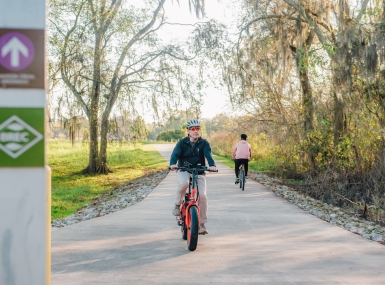DOT intends to prove itself with IIJA rollout

Key Takeaways
The U.S. Department of Transportation knows it has an image to change as it implements the Infrastructure Investment and Jobs Act, after already defying the odds to pass a bipartisan bill.
“We’re the dog who caught the car,” said Will Rasky, DOT special assistant for governmental affairs. “What’s in front of us right now is the opportunity to deliver … on time, on task and on budget. That has not been the calling card of U.S. infrastructure projects for a number of years, and we believe we can get back to that again.”
Part of that will be ensuring the federal government can get funding down to the local level and forming an almost symbiotic relationship with states, he said Feb. 12 to members of NACo’s Transportation Steering Committee.
Rasky said part of DOT’s communication with the National Governors’ Association included beseeching them to make sure local governments were part of their discussions to maximize the impact of their funding. That effort should benefit from 40 new discretional grant programs with more precisely tailored funding.
Equity will play a major role in funding, Rasky noted, because for too long, many communities have felt overlooked by infrastructure investments.
“We have to make sure that we’re using every level of power we have across the administration,” he said.
But paramount in the Biden administration’s transportation priorities is road safety. Transportation Secretary Pete Buttigieg announced the National Roadway Safety Strategy in January, which provides practical steps to systematically reduce avoidable traffic deaths and injuries.
“It sounds maybe fantastical or over the top, but I think the point is to establish the understanding that we don’t accept roadway fatalities as something that is acceptable,” said Emily Schweninger, a DOT senior policy advisor. “I feel like safety is this fundamental principle…it crosses a lot of different sectors; it also crosses a lot of divides and approaches.”
That approach, she said, would be holistic and in cooperation with different levels of government, without being too prescriptive.
That said, she suggested there was a simple solution.
“There’s so much that can be done by slowing down.”

Attachments
Related News

Heavier truck proposals in Congress threaten county bridges
Congress has already taken steps to increase maximum allowable truck weight, but county leaders should be sounding the alarm about what that can mean for their roads and bridges.

Trail systems offer transportation network alternatives
Multiuse trail systems rank among top county amenities, offering leisure opportunities and a transportation alternative that can divert traffic from road networks.

Podcast: Heavier truck proposals in Congress threaten county bridges
Johnson County, Texas Commissioner Rick Bailey spent 35 years in the trucking industry prior to running for office, and he offers two perspectives to the County News Podcast on the issue backed by his experience, but there’s no reason to save the surprise — he doesn’t approve of proposals to increase the weight limit on trucks.
